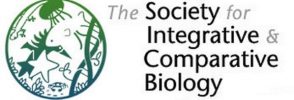Contents
Message from the Chair
Cameron K. Ghalambor, Chair.DEE@sicb.org
Dear DEE Members,
A common theme in this year’s newsletter is how much our lives have been impacted by the events surrounding us. Between the global coronavirus pandemic, protests for racial equality, and unprecedented wildfires and hurricanes, each of our lives has been impacted to different degrees. Thus, while SICB is a scientific organization, we are not divorced from the political, societal, and environmental issues facing each of us. What does this mean in practice for SICB as a whole, and DEE specifically? Behind the scenes I can report that I’ve been impressed by the leadership of SICB in terms of taking positions and putting policies in place that directly address issues of inequality, inclusiveness, and safety for our members. Against this backdrop I wanted to give you a quick rundown on some new DEE developments. First, our current Secretary Martha Muñoz, was elected this spring to be Program-Officer Elect; she will take over for our current Program Officer Sarah Diamond in 2022. Martha and I will also be finishing our tenures as Secretary and Chair respectively, in January 2021. Christine Miller from the University of Florida will transition from Secretary Elect to Secretary, and Fran Bonier from Queens University will transition from Chair Elect to Chair. Thank you all for serving the society and the division!!
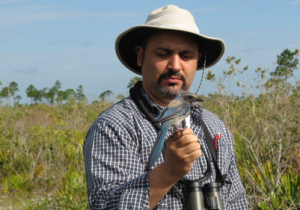
For me personally, it has been an honor to serve as your Chair for the past two years. My goal was to work towards making DEE your home within SICB. The coronavirus pandemic has thrown off some of the planned changes but keep your eye out for the next round of elections where we plan to include a vote adding a fee to DEE membership. As a reminder, the additional funds are to grow the DEE “Beers & Brains” social into a larger more inclusive social for DEE members. I hope in 2022 to join many of you in person at this social.
As for the 2021 SICB meeting in Washington D.C., the meeting will largely be a virtual event in response to the coronavirus pandemic. Virtual meetings represent both challenges and opportunities to interact. While many of you are no doubt disappointed and considering skipping out on this year’s meeting, I would encourage you to participate the best you can. The meeting still represents an opportunity to share with your colleagues and friends new research (or lack thereof) and our shared experiences during these challenging times. In a time of isolation, let’s not miss an opportunity to connect, even if it is virtual. I’d particularly like to reach out to members who might not have attended a meeting before or in recent years; it would be great to see you virtually! I also want to let you know about the many events DEE will be sponsoring during the Washington DC meetings. Here is a quick rundown of DEE events.
Check out one of the six DEE sponsored symposia. From effects of light pollution to the biology of sticky substances, from mollusk to manakin genomics, and from spatio-temporal variation in behavior to pigment organelles, check out all the ways DEE provides the ecological and evolutionary “glue” that holds SICB divisions together. See Program Officer Sarah Diamond’s post below for more details about the symposia.
Speaking of symposia, don’t miss the DEE Huey Award Symposium for best student presentation. The symposium will feature talks by 7-8 finalists selected from a very competitive pool. You can count on some of the best talks of the meetings being in this symposium.
We won’t be able to meet in person but keep on the lookout for announcements on virtual meet-ups. See Graduate Student Representative Craig Marshall’s post below for more details.
I know the DEE Business Meeting doesn’t sound that exciting, but plan on “virtual” attendance. Stay tuned to the SICB website for more information.
What do you consider cutting-edge science? What topics do you think need attention and synthesis? The 2023 SICB meeting in Austin, Texas will soon be soliciting proposals for symposia. It’s not too early to start thinking about symposium ideas and people who could participate.
Lastly, remember to renew your membership and take advantage of early registration to get the most value for attending the Washington DC meeting!
Message from the Program Officer
Sarah Diamond, DPO.DEE@sicb.org
Hi Division of Ecology and Evolution Members!
It’s been a productive, if unconventional, autumn as we have been working to wrangle the over 1,600 abstracts for the 2021 meeting that have been submitted. We had a total of 183 abstracts from DEE, including 38 posters and 145 talks, with a number of additional presentations on DEE-related themes.
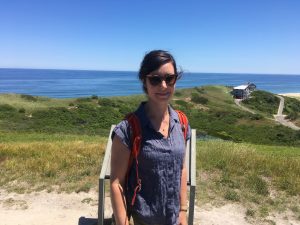
Fortunately, with the digital platform for the meeting, there will now be an extended window of time to view the presentations (3 January to 28 February). There will also be lots of opportunities to interact with folks via the chat feature on their presentation and at the various social events (more on that below).
We also have a fantastic lineup for our Best Student Presentation, the Huey Award, which will feature 11 finalists in the poster and talk formats. Thanks to everyone who submitted an application for the Huey Award competition! We had loads of applications and it was incredibly difficult for the judging panel to select the list of finalists. As such, the BSPs are often some of the strongest presentations of the entire conference, so be sure to bookmark these on your schedule. The DEE BSPs will all occur on the first day of the meeting, 3 January, so that should make it fairly easy to do!
Last, but not least, we have six DEE-related symposia in the 2021 meeting. These symposia cover a large range of topics that highlight the diversity of scientific questions and approaches encompassed by DEE. We have a couple of genomics-themed symposia across diverse groups from manakins to mollusks. We also have symposia on artificial light at night (ALAN) impacts on organisms; spatio-temporal variation in behavior; integrative biology of pigment organelles; and the biology of sticky substances. Keep an eye out to bookmark these great symposia on your SICB schedule.
Stay tuned for information about social events including the Beer and Brains social. Things will certainly be a bit different this year, but we have some innovative ideas on the table for how to foster the scientific discussion, socializing and networking that we all enjoy at Beer and Brains under the new conference format this year. If you have ideas for the socials, especially Beer and Brains, please don’t hesitate to get in touch with your DEE officers.
Finally, the programming committee is currently reviewing the submissions for proposed symposia for the 2022 meeting. Thanks to everyone who submitted a symposium proposal this year – we have a really strong lineup of contributions to the 2022 conference and ICB journal. Looking ahead, it’s never too early to start thinking about symposia for 2023. (In fact, some of you have already submitted future symposia ideas, so keep those coming!) Your DPOs, myself included, are always happy to discuss symposium ideas with you, so please do reach out with any questions, whether you’re at the planning stage or have a full proposal together. Also, just a quick reminder that the wonderful Martha Muñoz is our new DEE DPO elect – congrats!! She will be taking over the programming duties for the next cycle, so do keep that in mind when soliciting feedback on your future symposium proposals.
Although we’re still in the thick of it programming-wise, it’s been an honor to serve as your DPO. It’s certainly not what I expected when I signed on as DPO, but I’d like to thank all of you for your excellent suggestions and feedback while we’ve been programming the content for this truly unprecedented SICB conference. I continue to be amazed by your perseverance. The number and quality of abstracts and symposium proposals we received despite everything that’s happened this year is incredible and inspiring. I wish you all the best and look forward to interacting with you in the new year.
Yours sincerely, Sarah Diamond
Message from the Secretary
Martha Muñoz, Secretary.DEE@sicb.org
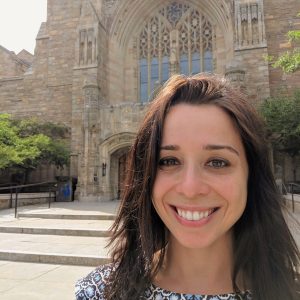
This time last year I wrote to all of you in enthusiastic anticipation of the 2020 meeting in Austin, Texas. This year, the anticipation feels bittersweet because the backdrop for our upcoming meeting is full of loss and hardship. For all of us, 2020 is different. For many of us, the challenges are severe. We, as a society and community of colleagues, are struggling. Like Cam stated above, the scientific community is connected to the political, societal, and environmental issues facing each of us.
This year, SICB hopes to offer you an opportunity to come together – albeit digitally – to enjoy the intellectual alchemy that scientific discussion affords. This is a chance to build community, learn, and, hopefully, heal a little bit. I have been to several planning meetings in my capacity as an incoming Program Officer and as a member of the SICB Public Affairs Committee. What I have seen is incredible hard work and good will to put together a meeting amid many challenges. I know that SICB 2021 will be different, but for that reason it will also be special. I hope that you will join us however you can.
This fall marks my last term as DEE Secretary. After the 2021 meeting, Christine Miller will take over as Secretary. She has already done an excellent job as Secretary-Elect, and I know that she will be an amazing leader in our division. It has been an honor to serve DEE as Secretary, and I look forward to a new adventure as incoming Program Officer. Sarah Diamond has led by example, and I hope to continue all the incredible work she has done for the division. One of my goals as Secretary was to elevate the visibility of our junior members. To this end, we started including Profiles for several early career members of DEE in our fall newsletters. Below, you will see highlights for four of our graduate student and postdoctoral members. If you would like to be featured in the future, please reach out to me or to Christine.
Finally, I want to share that SICB will honor the life and legacy of Dr. George Gilchrist at the 2021 meeting through a special session. This session will take place towards the end of the meeting (February 2021). Cam and I are co-organizing this session and we have a wonderful lineup of speakers who have volunteered to share how George impacted their lives. Some of the talks are mostly scientific, focusing on how George’s prescience in integrative physiology inspired their research. Other talks focus on George as a mentor and colleague, and on how he inspired so many of us to become scientists. Please join us to honor and celebrate George.
Message from the Student/Postdoc Representative
This is my second year as your DEE graduate/postdoc representative for SICB and I couldn’t be more thrilled! I want to once again thank all of the graduate students, postdocs, and faculty that were able to attend our 7th annual Beers and Brains event in Austin, TX. Beers and Brains 2020 would not have been the success that it was if it were not for your participation. Although SICB will look quite different this year, we are still hoping to plan a virtual social for our DEE community. Our goal, as in the past, is to provide you with the opportunity to network, catch-up with old friends, and make new ones!
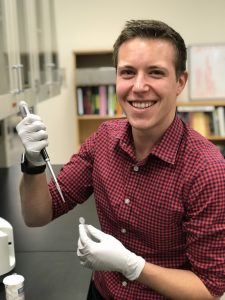
The SICB Student/Postdoctoral Affairs Committee (SPDAC) has some exciting events planned for this year’s conference. SPDAC will be hosting a virtual roundtable workshop that begins as a panel discussion before breaking out into smaller groups. This year’s panelists will consist of experts from various scientific careers inside and outside of academia. We will also be continuing our tradition of making ourselves available to you and addressing any questions you might have at our SPDAC virtual booth, so come say hello! SPDAC is currently in the process of generating digital brochures to provide undergraduates, graduate students, and postdocs with useful information and tips, regardless of your current status in academia. New topics for this year include: how to write research and diversity statements for those applying for faculty positions, tips for undergraduates taking time off before applying to graduate school, networking for first-generation students, information for those applying to academic and federal fellowship opportunities, and many more. We will be posting brochures with more details on the SPDAC website closer to January. You will be able to download the brochures at your convenience.
Look out for more updates regarding DEE and SPDAC as we get closer to January! Be sure to follow SPDAC on Twitter (@SICB_SPDAC) for the most up-to-date information on all of the events we have planned. If you should have any questions or are looking for additional information about DEE and ways that you can become more involved, please do not hesitate to reach out (Craig.Marshall@colostate.edu). I look forward to hearing from you so we can work together to make SICB 2021 rewarding, memorable, and fun!
DEE Student Profiles
Beginning in 2019, our fall newsletter has featured profiles from our early career members, especially graduate students. Here we continue this feature and present highlights for four early career members of DEE.
Name: Henry Camarillo
Position: Ph.D. Student
Department: Yale University Department of Ecology & Evolutionary Biology
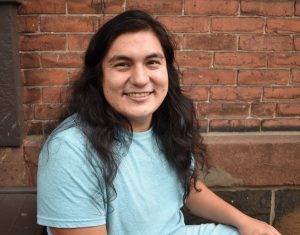
Personal Website: henrycamarillo.weebly.com
Research Description: I’m interested in understanding morphological evolution and its relationship with organismal function. I do this by considering how organisms have responded to different environmental factors such as diet, predation, and/or competition. I am particularly interested in understanding these form-function relationships on a macroevolutionary scale and I utilize phylogenetic comparative methods to do this. My current research is focused on understanding how feeding on hard-shelled prey as opposed to more elusive prey has influenced the tempo and mode of evolution in four-bar linkage systems for wrasses and mantis shrimp.
Hobbies and Interests: Listening to electronic music, going on walks with my dog, and doing anything water related (swimming, going to the beach, etc.)
A fun memory of SICB: One of my favorite SICB memories was definitely the social for the Division of Vertebrate Morphology at SICB 2018 in San Francisco. SICB 2018 was my first SICB and I was already having a great time. Since I’m really into techno music, arriving at the social to find a techno DJ playing music solidified my feelings that SICB was the society and conference for me!
Advice for fellow students: One piece of advice I would give to my fellow students is to remember the reasons you chose to pursue science in the first place. It can be really easy to forget our reasons for pursuing science when dealing with stressful/anxiety-inducing tasks. Remembering my love for animals, nature, and learning helps ground me when dealing with the stress.
Name: Brett L. Hodinka
Position: Ph.D. student at Simon Fraser University in British Columbia
Department: Department of Biological Sciences
Personal Website: https://bretthodinka.weebly.com
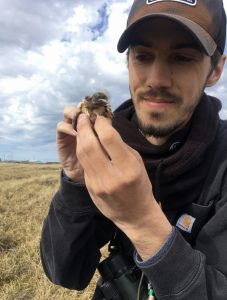
Twitter: @BrettHodinka
Research Description: My current work integrates physiology, evolutionary biology, and animal behavior in attempts to increase our knowledge of the mechanisms underpinning individual variation in a number of avian life-history traits that contribute most to variation in fitness. More specifically, I am investigating the idea of “animal athletes” in the context of ecological performance to identify individual variation in physiology and behavior that may lead to increased fitness. This research is being conducted using both a captive population of zebra finches (Taeniopygia guttata) and a wild-breeding population of European starlings (Sturnus vulgaris).
Hobbies and Interests: Some of my long-standing interests include mountain biking, kayaking, and hiking. More recently though, I have taken up birding! I now have a running “birder’s life list” and have been trying to add to it a newly seen bird every chance I get. Also, I really enjoy drawing when I have time. I mostly do “stipple” or pointillism drawings of wildlife which are basically pictures created by applying dots in distinct patterns to create various shapes and shading.
A fun memory of SICB: I have only been attending SICB for two years since the start of my Master’s degree at Western Kentucky University (WKU) and, thus, I have only been to the 2019 (Tampa, FL) and 2020 (Austin, TX) conferences so far. While I had a lot of fun at both, the Tampa conference sticks out the most to me. Throughout the duration of the conference, my P.I. at the time (Dr. Noah Ashley; WKU) spent some time introducing me to several amazing scientists from his field. It just so happened that this is where I would meet Dr. Tony Williams who, at the conference, was eager to have me send him an informal application package for an open Ph.D. position in his lab. I spent the night in my hotel room getting together a small application and sent it to him immediately! I am happy to say that I am now a Ph.D. student in Tony’s lab at Simon Fraser University.
Advice for fellow students: One bit of advice that I received, and maybe overlooked early on in my scientific career, was that you should try your best to network; and not just at conferences. At some of the first conferences I attended, I often quietly walked around listening to poster and oral presentations without interacting with anyone or asking questions. It was not until my first SICB conference that I saw the merit in networking. At conferences and even via social media, I have made connections with fellow researchers that have not only led to personal friendships, but also collaborative work on various aspects of my past and current research. So, not only do I get to look forward to reconnecting with these people at future conferences, whether it be in-person or virtual, but also these interactions open more doors and have the potential to elicit larger-scale collaborative research between you and somebody you met at SICB, for example!
Name: Valeria Ramírez Castañeda
Position: Second-year graduate student
Department: Integrative Biology, University of California Berkeley
Personal Website: https://esperando370.github.io/vramirezc_website/
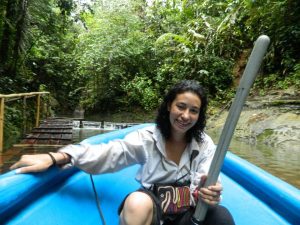
Research Description: Adaptations to new environments or novel interactions among organisms increases biological diversity. One type of interaction that often drives biological diversification is predator-prey interactions, which could result in co-evolution between different organisms adjacent in a food web. For my Ph.D., I am working with predators of poison frogs in Colombia to evaluate how multiple predators have adapted to feeding on toxic prey.
Hobbies and Interests: I enjoy contributing to science communication in Spanish, as well as discussions on diversity, inclusion, and equity in STEM. Therefore, I am currently working on understanding the consequences of the hegemony of the English language in science and generating viable alternatives. I also like to spend time with my friends, family, and pets. I like to camp and hike. Recently, I started to paint with watercolors and I am really enjoying it.
Advice for fellow students: Try to have fun in whatever you are doing. Help the community by creating diverse, inclusive, and equitable environments. And always remember: auto exploitation is not a virtue, you’re worth more than your work.
Name: Linyi Zhang
Position: Postdoc researcher
Department: Biology, Utah State University
Personal Website: https://www.researchgate.net/profile/Linyi_Zhang2
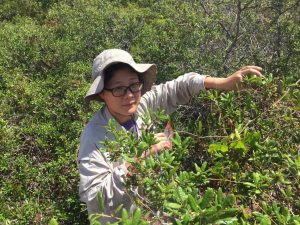
Research Description: The common theme for my Ph.D. and postdoc work is to explore the interaction between evolutionary and ecological factors. For my Ph.D. work, I investigated how divergent host plant environments could promote speciation in a group of highly specialized herbivores called gall wasps. First, I focused on one species and studied how divergent environments promoted multiple reproductive barriers among populations, including reduced immigrant fecundity and context-dependent hybrid fitness. Then, I expanded to test five gall wasp species that feed on the same divergent set of host plants to consider the generalities of divergence across this guild. For my postdoc work, I am exploring how environmental variation across time and space drive allele frequency changes in Lycaeides butterflies across the genome. I aim to accomplish this by linking genotype, phenotype and fitness through field collections, manipulative experiments as well as genomic work.
Hobbies and Interests: Hiking, board games, ping-pong.
A fun memory of SICB: Exploring the food options in the city with my peers was a lot of fun!
Advice for fellow students: I got this advice from faculty in my first year of Ph.D., when I was stressed about how to come up with my own research ideas that are executable: “read as much as possible and as wide as possible”. At the time, that didn’t comfort me very much. Later on, I found that it is the most important thing in graduate school. Ideas will come when you read and think and give it time.
